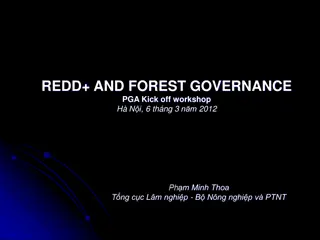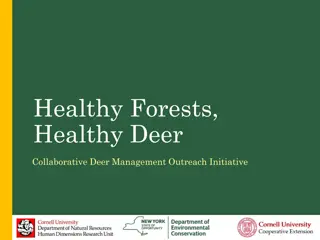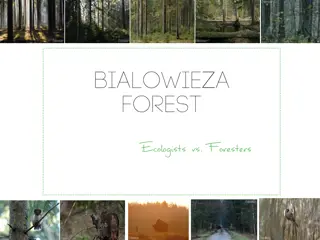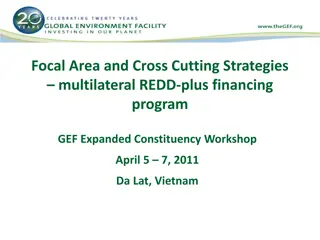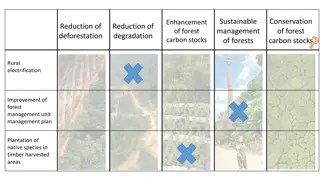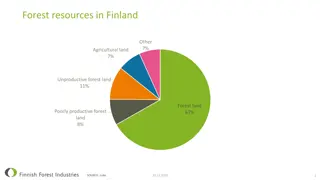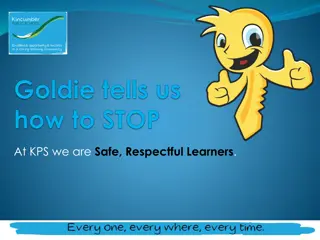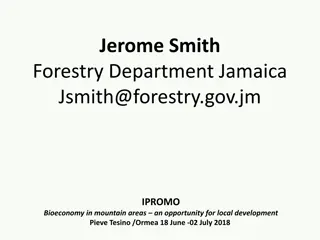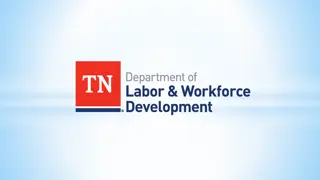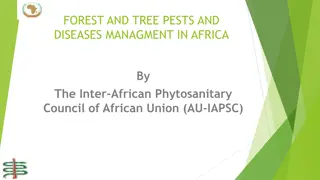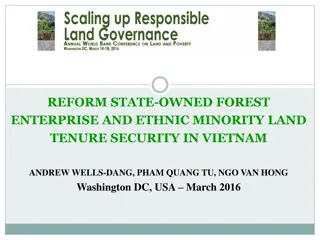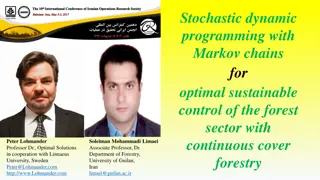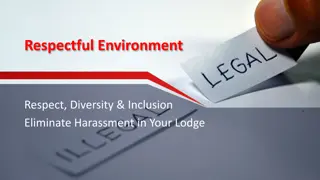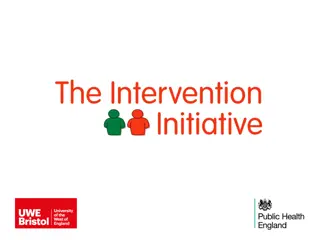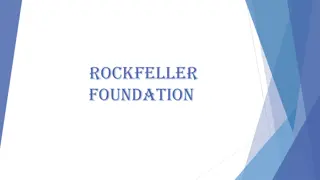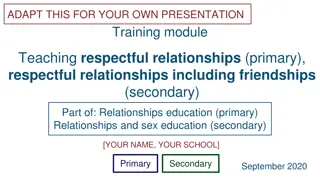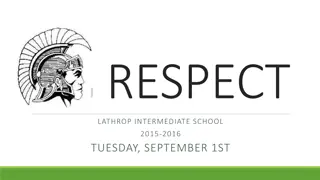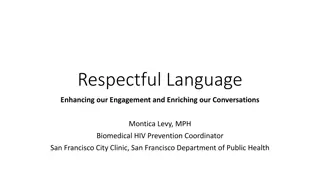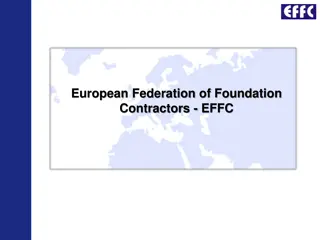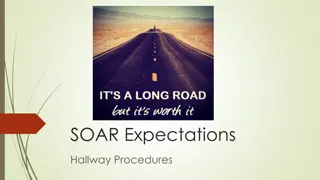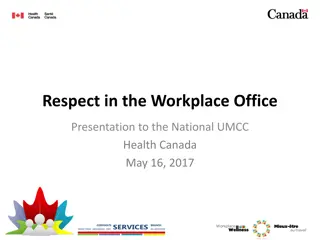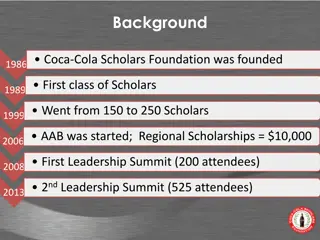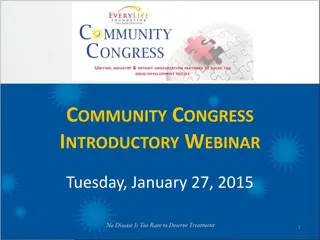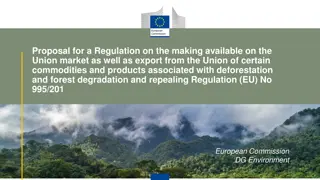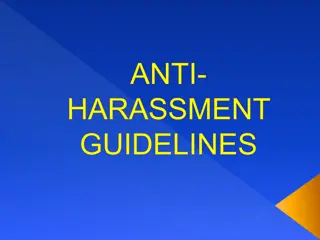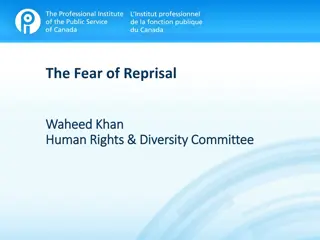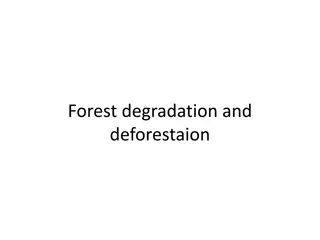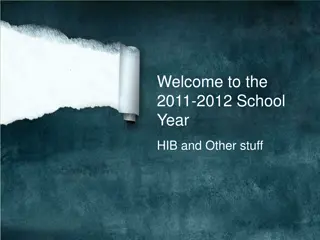Promoting Respectful and Safe Environments in the American Forest Foundation
This content highlights the importance of maintaining a respectful and safe environment, particularly within the American Forest Foundation and the American Tree Farm System. It emphasizes understanding and appreciating the distinguishing characteristics of individuals, recognizing and addressing harassment, and fostering a zero-tolerance policy towards any form of discrimination. The mission of the American Forest Foundation centers around ensuring sustainability for family forests, with a strong commitment to inclusivity and safety for all participants.
- Respectful environment
- Safe environment
- American Forest Foundation
- Harassment awareness
- Sustainability
Download Presentation

Please find below an Image/Link to download the presentation.
The content on the website is provided AS IS for your information and personal use only. It may not be sold, licensed, or shared on other websites without obtaining consent from the author. Download presentation by click this link. If you encounter any issues during the download, it is possible that the publisher has removed the file from their server.
E N D
Presentation Transcript
Respect in the Environment ATFS Network
Objectives Maintain a respectful and safe environment through understanding and appreciation of others, and their distinguishing characteristics. Describe and understand when behaviors are reasonably perceived as harassment and sexual harassment. Differentiate between harassment and courteous/friendly behavior. Know what you should you do if you see, hear and/or experience harassment according to the ATFS s policies. 2
American Forest Foundation (AFF) Mission "The American Forest Foundation ensures the sustainability of America s family forests for present and future generations in conjunction with our strategic partners." 3
Respectful and Safe Environment With Great Volunteers One Mission Working Together 18 Connecting with Across generations 4
Respectful and Safe Environment The American Forest Foundation (AFF) is committed to ensuring a safe environment for all involved in and while implementing the American Tree Farm System (ATFS). This includes: Volunteers Partners Contractors Staff Landowners Others In support of this commitment and values shared by members of its community, AFF maintains and enforces a policy of zero tolerance for any type of harassment. 5
Distinguishing Characteristics Individuals Race Ancestry Color Marital Status Creed Pregnancy Religion Childbirth or related medical conditions Age National Origin Sex Disability Sexual Orientation Any other category protected under federal, state or local law (protected classes) Gender Identity 6
Harassment is A form of discrimination. Based on distinguishing characteristics, which are protected classes under the law. Verbal, nonverbal, visual and/or physical. Unwelcome. Humiliating, threatening, intimidating or offensive behavior. 7
Types of Harassment Visual Verbal/Nonverbal Written Physical 8
Types of Harassment / Sexual Harassment Verbal Offensive remarks, comments, jokes, slurs, verbal conduct, sexual remarks, sexual advances, or requests for sexual favors regardless of the gender of the individuals involved. Nonverbal Offensive pictures, drawings, photographs, figurines, writings, or other graphic images. Written Offensive communications, including text messages, instant messages, websites, voicemails, social media postings, e-mails, faxes, and copies. Physical Offensive physical conduct, including touching and gestures, regardless of the gender of the individuals involved. 9
Harassment Circumstances Harassment may occur in a variety of circumstances including, but not limited to: The harasser may be either male or female. The victim does not have to be of the opposite sex. The victim does not have to be the person harassed but could be anyone affected by the offensive conduct. The harasser may be the victim s supervisor, an agent of AFF, a volunteer, or a contractor. 10
Thats Harassment? Intention vs. Perception It does not matter if one person did not intend to harass another, as much as it matters how the behavior is perceived by the recipient. Reasonable Person Standard The recipient s perception of harassment is similar and reasonable to how most people within a community would interpret or respond to the behavior. 11
Examples of Harassment Degradation of any group or class of people. Treatment of protected individuals in a demeaning fashion. Deliberate, repeated, or unsolicited verbal comments; gestures or physical actions of a sexual nature toward another volunteer, AFF staff, landowner, or contractor (i.e., lewd or lascivious remarks and/or any unsolicited physical contact). Subtle pressure or explicit demands for sexual favors or sexual activity of another volunteer, staff, or contractor. Any other harassment actions which are undertaken with the deliberate intent to disturb or bother persistently and continually or repeatedly. 12
Is this Harassment? 1. A landowner or vendor gives you a cartoon with a racially derogatory caption. Yes No 2. You overhear someone telling his/her coworkers an ethnic joke. Yes No 3. You provide another volunteer on a regular basis, criticism about their work performance. Yes No 13
Is this Harassment? 1. A landowner or vendor gives you a cartoon with a racially derogatory caption. X Yes No 2. You overhear someone telling his/her coworkers an ethnic joke. X Yes No 3. You provide another volunteer on a regular basis, criticism about their work performance. X Yes X No (Depends on situation) 14
Sexual Harassment Defined The uninvited/unwelcome verbal, nonverbal or physical behavior of sexual nature toward another person. Illegal Violation of state and federal law which includes Title VII of the Civil Rights Act of 1964. 15
Categories of Sexual Harassment Hostile Work Environment Quid Pro Quo Harassment By Individuals (outside the organization) 16
Sexual Harassment: True or False? 1. Title VII of the Civil Rights Act prohibits harassment based on sexual orientation. 2. To qualify as sexual harassment, the parties involved have to be of the opposite sex. 3. Sexual advances made outside the workplace may be considered in determining whether or not harassment has occurred. 4. When a person reports or participates in someone else s report of harassment, he or she is protected from any form of retaliation. 5. If an employee or volunteer displays a suggestive photo in their work area, and another employee or volunteer finds it personally offensive but does not complain, the display itself may constitute sexual harassment. 6. Forwarding ethnic jokes through e-mail would not be considered harassment, as long as you only send them to people you know won t be offended. 17
Sexual Harassment: True or False? 1. Title VII of the Civil Rights Act prohibits harassment based on sexual orientation. True 2. To qualify as sexual harassment, the parties involved have to be of the opposite sex. F a l s e True 3. Sexual advances made outside the workplace may be considered in determining whether or not harassment has occurred. True 4. When a person reports or participates in someone else s report of harassment, he or she is protected from any form of retaliation. True 5. If an employee or volunteer displays a suggestive photo in their work area, and another employee or volunteer finds it personally offensive but does not complain, the display itself may constitute sexual harassment. F a l s e 6. Forwarding ethnic jokes through e-mail would not be considered harassment, as long as you only send them to people you know won t be offended. 18
Sexual Harassment: Yes or No? 1. People who dress in a sexually attractive manner are asking for sexual comments. 2. You see one volunteer give another a friendly hug. 3. The organization is responsible for the inappropriate behavior you may receive from vendors and/or clients. 4. Only your alleged harasser s intent matters, not how you perceived the behavior. 5. You have an obligation to inform someone if you are offended by their behavior. 19
Sexual Harassment: Yes or No? 1. People who dress in a sexually attractive manner are asking for sexual comments. No No 2. You see one volunteer give another a friendly hug. 3. The organization is responsible for the inappropriate behavior you may receive from vendors and/or clients. Yes 4. Only your alleged harasser s intent matters, not how you perceived the behavior. No 5. You have an obligation to inform someone if you are offended by their behavior. Y es 20
Scenarios: What Would You Do? A protected class is a group of people, with a common characteristic who are legally protected from discrimination on the basis of the characteristic. Diversity includes protected classes as well as other characteristics, which make each of us unique. The following scenarios are circumstances in the environment that demonstrate an impact on a protected class and/or diversity. Gender Differences Scenario 1) Race/Cultural Sensitivity Scenario 2) Generational Gap Scenario 3) Value and Lifestyle Differences Scenario 4) 21
Scenario 1: Gender Differences Participants Katie, female State inspector with 20+ years of experience. Frank, paternal, long-time landowner, with whom Katie has had a great relationship. Frank's son is assuming the role of land stewardship from his father. Challenges Frank's son does not see value in a female forester. He demeans the local Tree Farm Committee, for sending a woman to do a man s job. He shares his derogatory comments directly with Katie. 22
Scenario 1: Respect Gender Equality Is this Harassment? Yes, this is harassment. Women and men are to be treated as equals in the environment, regardless of their sex. How should Katie Respond? Avoid debating and/or discussing the son s perception of the competency of female foresters. Engage both Frank and his son in a professional manner, demonstrating her knowledge, skills, and expertise as a Forester. Document the incident and report to the Director of ATFS. 23
Scenario 2: Race / Cultural Sensitivity Participants Local Tree Farm Committee members, hosting a Field Day to show the work of the committee and continue to build positive relationships. Local partners, who support ATFS, participating in the Field Day. Residents of the local community. Challenges All committees members need to demonstrate positive relationships and professional engagement with valued local partners. One committee member is telling off-color, racial and cultural jokes, which are inappropriate and insensitive to the environment. Other committee members and local partners are uncomfortable with this committee member s behavior. 24
Scenario 2: Embrace Diversity / Inclusion Is this Harassment? Sharing racial, ethnic and any jokes based on distinguishing characteristics and/or protected class is harassment. These actions create an uncomfortable, hostile environment, which is harassment. What should the response be? Stop the committee member s conversation immediately and gently redirect the conversation to professional topics. When appropriate, pull the committee member aside and share that his/her conversation made others feel uncomfortable and is a negative reflection of ATFS. Document the incident and report to the Director of ATFS. 25
Scenario 3: Generational Gap Participants Tree Farm Committee chairperson who is working hard to build a cohesive team. Long-standing, well-respected committee member, who is having difficulty hearing, uses a cane and is repeating himself. Two new younger inspectors who have a lot of great ideas and energy. Challenges The committee has a generational gap among the members. The physical ability of one member is compromised by age. The younger inspectors are demonstrating a lack of respect and sensitivity for the elder member. 26
Scenario 3: Leverage the Generations Is this Harassment? Yes, this is harassment. All individuals should be respected and their contribution values regardless of their age, abilities and /or limitations. What should the committee chairperson do? Set standards for respectful engagement by all. Provide insight on the value that each member provides, including: - Long-term volunteers have perspective, experience, and understanding of the systems, procedures and best practices. - New, younger members bring new ideas, fresh perspective, and positive change. Engage and leverage the contributions of all committee members. Document the incident and report to the Director of ATFS. 27
Scenario 4: Value / Lifestyle Differences Participants Josh, the new state inspector, a recent college graduate in his mid-20's. Tyler, a seasoned inspector with 20 years of experience. Landowner who values trees and hosts yoga seminars on his property. Challenges Tyler perceives the landowner and labels him as a tree hugger and hippie." Tyler shares his negative perceptions of the landowner with Josh. Tyler does not demonstrate respectful, role model behavior for Josh. 28
Scenario 4: Respect Each Other Is this Harassment? Yes, this is harassment within ATFS. Employees and volunteers are expected to always treat each other and clients with professional respect. ATFS's standards for respect in the environment exceed the legal threshold of respect for the protected classes. What should Josh s response be? Inform Tyler that the property owner has the right to manage his property as he believes best. Explain to Tyler that his perceptions are based on broad stereotypes, and he (Josh) intends to get to know the landowner as an individual. Document the incident and report to the Director of ATFS. 29
Maintain Respectful and Safe Environment Avoid stereotypes Have facts and information Knowledge Have an awareness of differences Communicate empathy Understanding Have tolerance for differences Demonstrate respect for all Acceptance Develop self-awareness Develop stronger communication skills Behavior 30
If You See, Hear, or Experience: Take Action 1. Say no clearly. 2. Document the harassment. Report immediately, no matter how slight the actions may seem. 3. 4. Know that you are protected from retaliation. Do not let harassment continue! 31
ATFS Policy: Reporting Harassment Due to the very serious nature of harassment, discrimination and retaliation, you must report your concerns to one of the individuals listed below: 1. Discuss any concern with the: Director of ATFS (202) 765-3529 2000 M St, NW, Suite 550 Washington, DC 20036 2. If you are not satisfied after you speak with the Director of ATFS, or if you feel that you cannot speak to the Director of ATFS, discuss your concern with: Director of Human Resources (202) 765-3561 2000 M St, NW, Suite 550 Washington, DC 20036 32
ATFS Policy: Investigating Claims AFF will investigate the report and then take prompt, appropriate remedial action, per relevant AFF policies or processes. This process ensures the validity and details of that claim are fully investigated with a fair and due process. All investigations, discussions, and meetings will be held in confidence and shared only on a need to know basis. The complainant will be notified of what action will be taken if any. Revocation of participation in ATFS will result from investigations finding evidence of harassment in any form. 33
Your Role and Responsibility Treat your co-workers with dignity and respect their rights. Value and leverage the differences in others. Modify communication and behavior based on individual differences, for fair, equitable and inclusive engagement. Prevent and protect all employees from discrimination and harassment. If you hear something, say something. Summary ATFS has an inclusive and thriving environment where each volunteer can do his or her work. All employees and volunteers have a right to work in an environment free from discrimination and harassment. All employees and volunteers have a responsibility to demonstrate respect to each other, clients, vendors and any other stakeholder of the business. 34
Quotes for Consideration Self-respect by definition is a confidence and pride in knowing that your behavior is both honorable and dignified. Respect yourself by respecting others. - Miya Yamanouchi Creating and managing an inclusive and diverse workforce is a process, not a destination." - R. Roosevelt Thomas, Jr. The achievements of an organization are the combined effort of each individual. - Vince Lombardi "Coming together is a beginning. Keeping together is progress. Working together is success." - Henry Ford 35



